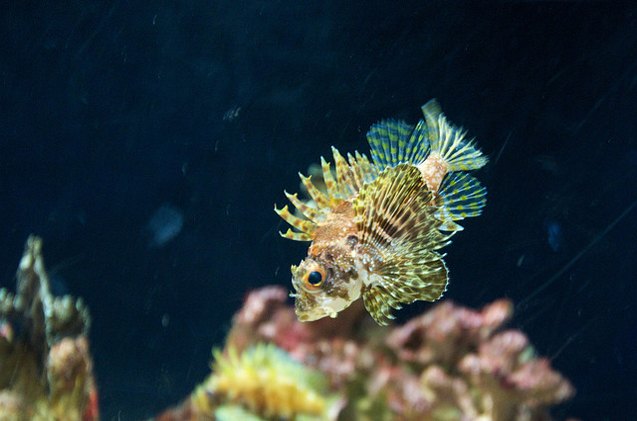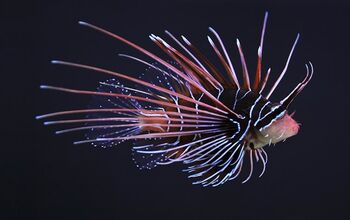Have you recently noticed your cat, usually a bottomless pit, suddenly turning up their nose at their food dish? Whether it’s a sudden disinterest in their usual meal or a complete aversion to food, a change in your cat’s appetite could be a serious cause for concern.A decrease in appetite may be the result of several factors, ranging from a minor inconvenience or change in taste (they can grow tired of their food, too) to a serious medical condition. The first step to fixing the situation is to figure out the root cause.This post will look at some of the most common reasons a cat may stop eating, offer tips and tricks to encourage them to eat again, and help you decide when you should seek professional help from your veterinarian. Remember, if this is a sign of an underlying illness, early intervention is key!Let’s help your kitty get their appetite back!Why is My Cat Not Eating?Understanding the cause of your cat’s loss of appetite is the first step in determining the best course of action, whether it can be handled at home or calls for a trip to the vet. While occasional picky eating is normal for some cats (my girl Pippen goes through phases), an ongoing, persistent disinterest in their food may be a red flag for a more serious underlying medical issue.Here are a few of the more common reasons a cat may have stopped eating:Illness or DiseaseLike with people, several illnesses, diseases, and medical conditions could significantly impact your cat’s appetite. After all, if you’re not feeling well, eating can often make that feeling worse in the short term.Some possible explanations for the change include:Nausea is a common side effect of many cat-related illnesses.Upper respiratory infections can cause nasal congestion and pressure, making eating uncomfortable. Dental problems like tooth decay, cavities, or abscesses can lead to pain and difficulty chewing.Chronic illnesses like kidney disease, hyperthyroidism, and diabetes may disrupt your cat’s normal body functions, impacting their appetite.PainAnother potential medical-related reason for your cat not wanting to eat - Pain (whether acute or chronic) can leave your best friend feeling “off.” Injuries, arthritis, and other painful conditions can make movement uncomfortable, including chewing or even bending down to reach into their food dish. It can also cause a decrease in their overall activity level, meaning they don’t need to eat as much to keep up with the calories they’re burning. Cats are masters at hiding pain. We, as cat parents, need to be on the look out for any signs of discomfort, such as reluctance to jump, difficulty grooming, or changes in the normal behavior.Stress and AnxietyCats are very sensitive creatures, and even the smallest changes in their environment can cause stress and anxiety. Introducing a new pet, the arrival of a new baby, moving to a new home, or even loud noises like fireworks or home renovations can disrupt their sense of security and lead to a loss of appetite.In addition to appetite changes, signs of trouble to look out for include hiding, excessive grooming, uncharacteristic aggression, or changes in their litter box habits (aka “accidents”).How to Encourage Your Cat to Eat (Home Remedies)So, you’ve noticed your cat isn’t eating or eating less than usual. Now what? What can you do to support your cat’s appetite?While a veterinary consultation should also be your first step, there are several things you can do at home while you wait for your scheduled appointment. Once you’ve consulted with your vet, they can guide you on the best course of action, including any at-home maintenance care. Here are some strategies to help support your cat’s well-being in addition to their professional veterinary care:Food TemptationMaking your cat’s food more appealing can sometimes do the trick, enticing them to push past whatever is causing them to resist eating. Warming their food slightly can sometimes do the trick. You can also try experimenting with different textures. Some cats prefer wet food, while others enjoy a dry kibble or pate.Offering new or tempting protein sources, like cooked chicken, flaked tuna (in water, not oil), or salmon, can help to pique their interest.If your cat’s food isn’t tempting enough, consider using a food topper to add interest to their meal. There are many options, ranging from hydration options like bone broth to more traditional food toppers like freeze-dried proteins. But be sure to check with your vet before making any changes to your cat’s diet.Try Fresh Human FoodsMany cats will turn their nose up at cat food only to be tempted by human foods. Of course, this means familiarizing yourself with the foods that can be given to your cat safely.Some options you may want to consider to spark your cat’s appetite include:SardinesTuna or salmon (fresh or canned in water, not oil)BeefChicken or turkeyEggs, especially egg whitesPumpkin pureeBroccoliGreen beansGreen peasCarrotsSpinachAny cooked foods should be unseasoned. Most common seasoning options are unsafe or even toxic for our cats.Pay careful attention if your cat is trying to eat things they shouldn’t, like your house plants. While it’s great that they are eating something, their chosen snack could prove to be toxic and lead to other serious problems.Create a Comfortable Eating EnvironmentTry reassessing not only what your cat is eating but where they are eating. Are there elements of your cat’s eating environment that are significantly impacting their appetite? Make sure your cat’s dish is placed in a quiet location where they can eat undisturbed, away from high-traffic areas of your home or the competition of other pets.What about your cat’s food dish? Consider experimenting with different food dishes, like a more shallow dish to prevent whisker fatigue, or a different material, like ceramic instead of stainless steel.How often are you cleaning your cat’s food dish? An unclean dish could turn your cat off from eating entirely. Keep their dishes clean and placed at a comfortable height for their size.Reduce StressHigh stress levels can be a major appetite killer. Try to minimize any potential causes of stress or anxiety in your cat’s environment. Pay attention to any triggers that could upset your cat, like overwhelming smells or sounds.You can also reduce your cat’s stress levels by providing mental stimulation. Ensure they have plenty of environmental enrichment in your home, such as scratch posts, cat trees, cat shelves, and interactive toys. Additionally, you may wish to consider calming aids, like Feliway diffusers, but consult with your veterinarian first.


























